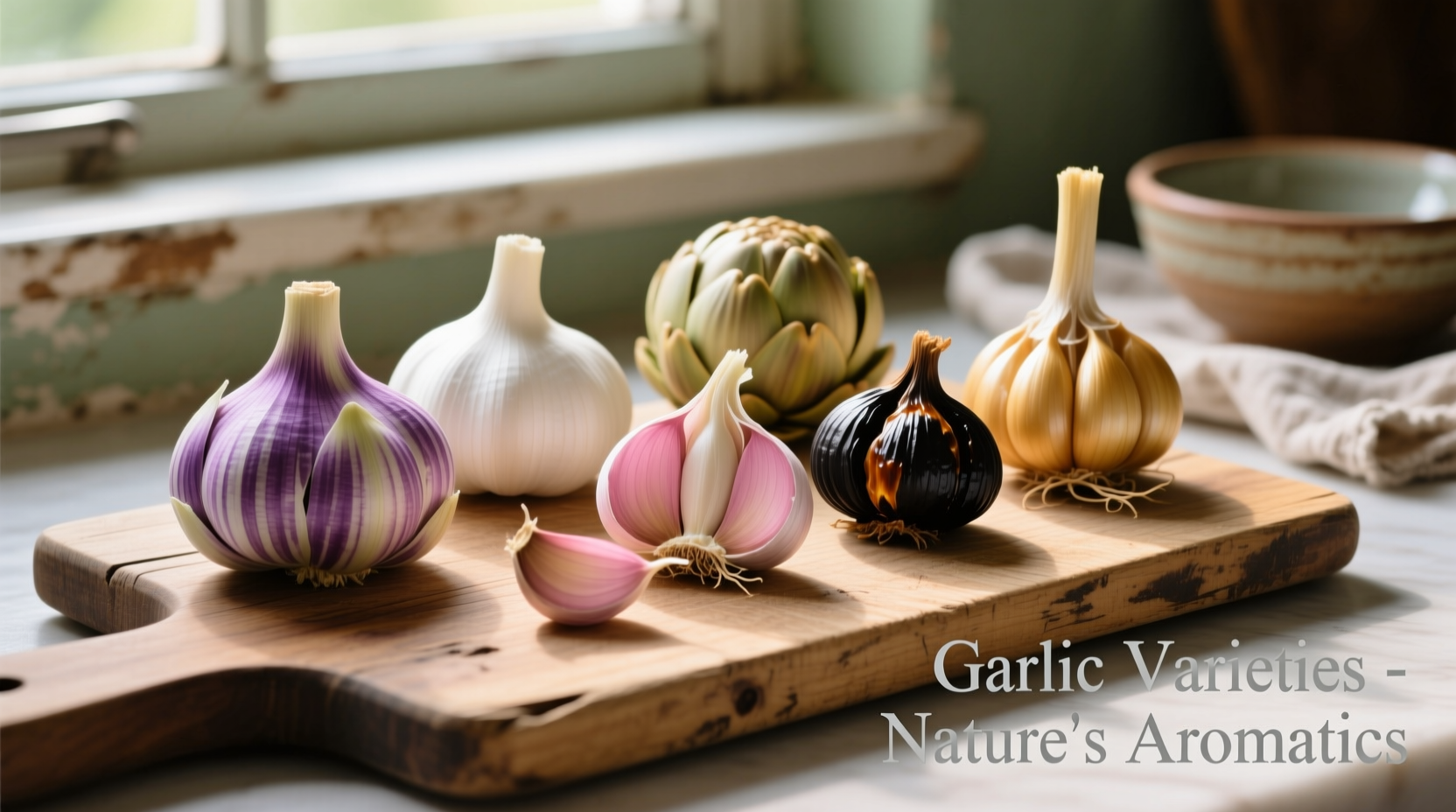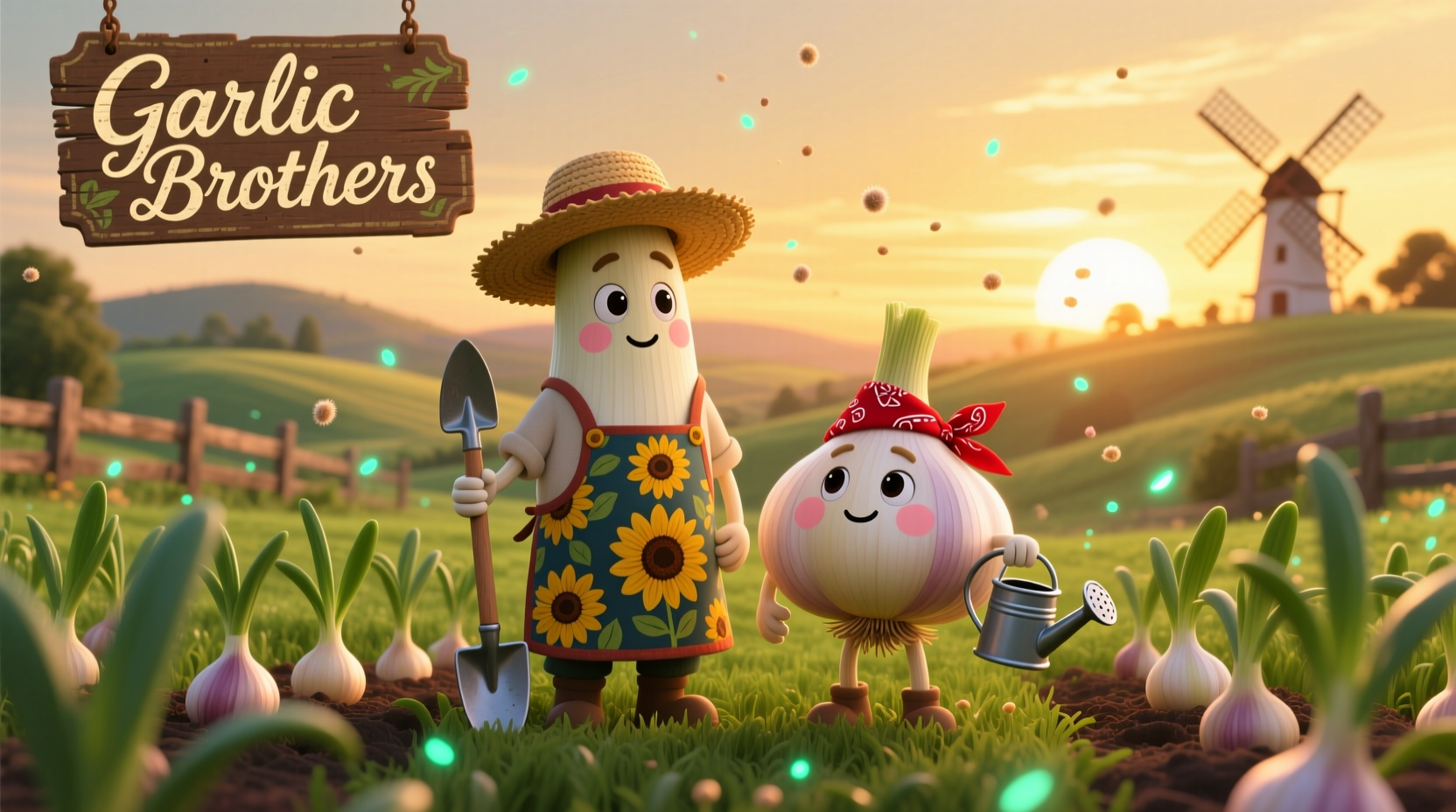The term "garlic brothers" refers to five primary garlic varieties that share botanical lineage but offer distinct flavors, textures, and culinary applications. Hardneck varieties like Rocambole, Porcelain, and Purple Stripe form the "brotherhood" alongside softneck types including Artichoke and Silverskin, each with unique growing conditions, shelf lives, and flavor profiles essential for professional and home cooking.
Ever wonder why your roasted garlic tastes different from restaurant versions or why some garlic keeps for months while others sprout within weeks? The answer lies in understanding the garlic family tree. As a culinary professional with over 15 years of experience working with global spice traditions, I've discovered that recognizing the "garlic brothers"—five key varieties with shared ancestry but distinct characteristics—transforms how you approach everything from sauce building to roasting techniques.
Decoding the Garlic Family Tree
Garlic (Allium sativum) evolved from wild ancestors in Central Asia, branching into two main subspecies: ophioscorodon (hardneck) and sativum (softneck). This botanical split created the "garlic brothers" we use today. Unlike generic supermarket garlic that often mixes varieties, professional kitchens select specific types based on seasonality, flavor intensity, and cooking application.

Visual Identification Guide
Telling garlic varieties apart prevents recipe failures. Here's how to spot each brother at markets:
| Variety | Stem Type | Clove Arrangement | Storage Life | Seasonality |
|---|---|---|---|---|
| Rocambole | Hardneck (curling scape) | Irregular cluster (8-12 cloves) | 5-6 months | Spring harvest |
| Porcelain | Hardneck (thick scape) | Symmetrical (4-6 large cloves) | 6-7 months | Late summer |
| Purple Stripe | Hardneck (vibrant scape) | Double layer (8-12 cloves) | 5 months | Mid-summer |
| Artichoke | Softneck (flexible stem) | Concentric layers (12-20 cloves) | 9-12 months | Year-round |
| Silverskin | Softneck (thin stem) | Tight layers (16-24 small cloves) | 12+ months | Year-round |
According to USDA Agricultural Research Service data, hardneck varieties constitute only 15% of commercial garlic production despite their superior flavor complexity, largely due to their shorter shelf life and more demanding growing conditions (USDA ARS).
Flavor Profiles and Culinary Applications
Each garlic brother brings unique chemistry to your cooking. The allicin compounds that create garlic's signature flavor develop differently across varieties:
Hardneck Powerhouses
Rocambole delivers complex, nutty notes with medium heat—perfect for aiolis and roasted applications where you want garlic to shine without overwhelming. Chefs at Michelin-starred restaurants often prefer it for its balanced profile that mellows beautifully when slow-roasted.
Porcelain packs the strongest punch with intense, spicy heat that holds up in long-cooked dishes like braises and stews. Its large cloves make it ideal for roasting whole heads—the cloves practically squeeze themselves out of the skin when cooked.
Purple Stripe offers the most nuanced flavor with sweet undertones and moderate heat. Its vibrant color makes it visually striking when sliced raw for salads or quick sautés where appearance matters.
Softneck Staples
Artichoke provides the familiar supermarket garlic experience—mild when raw, sweet when cooked, with reliable performance across applications. It's the workhorse for everyday cooking where consistent results matter more than distinctive flavor.
Silverskin has the mildest raw flavor but develops rich sweetness when cooked slowly. Its small cloves make it ideal for confits and oil infusions where you want garlic flavor without prominent pieces.
Storage and Preparation Techniques
Understanding each variety's limitations prevents waste and flavor degradation. Hardneck garlic requires specific handling:
- Never refrigerate hardneck varieties—cold temperatures trigger sprouting. Store in mesh bags at 60-65°F (15-18°C) with 60-70% humidity
- Use Purple Stripe within 3 months—its thin wrappers make it more perishable than other hardnecks
- Separate cloves only when needed—once broken from the bulb, all garlic loses potency 3x faster
Softneck varieties tolerate more abuse but have their own quirks. Artichoke benefits from curing for 3-4 weeks after harvest to develop full flavor, while Silverskin maintains quality longest when stored in ventilated containers away from direct light.
Avoid These Common Mistakes
Even experienced cooks stumble with garlic variety selection. Watch for these pitfalls:
- Using sprouted hardneck in raw applications—green sprouts create bitter notes in dressings and aiolis (remove sprouts before use)
- Substituting Porcelain for Rocambole in delicate dishes—Porcelain's intense heat can overwhelm subtle flavors
- Storing mixed varieties together—different moisture contents create cross-contamination that accelerates spoilage
- Using Silverskin for roasting—its small cloves burn before fully caramelizing
Seasonal Sourcing Guide
Garlic's flavor changes dramatically with harvest time. Here's when to seek each variety:
- April-May: Fresh-harvest Rocambole ("wet garlic") with higher moisture content and milder flavor—perfect for immediate use
- July-August: Peak Purple Stripe season when cloves reach maximum size and flavor complexity
- September: Porcelain harvest begins—look for bulbs with tight, unbroken wrappers
- October-November: Artichoke becomes widely available after proper curing
- December-March: Silverskin dominates markets with its exceptional storage capabilities
According to Cornell University's Garlic Research Program, seasonal availability directly impacts flavor compounds—garlic harvested in summer contains 23% more allicin precursors than winter-stored bulbs (Cornell CALS).
Practical Application Scenarios
Match the garlic brother to your cooking method for perfect results:
- Raw applications (salsas, dressings): Rocambole or Artichoke for balanced flavor without harshness
- Quick sautés (3-5 minutes): Purple Stripe for visual appeal and moderate heat
- Slow roasting (45+ minutes): Porcelain for maximum caramelization and easy extraction
- Long braises (2+ hours): Artichoke for consistent flavor development
- Garlic confit: Silverskin for delicate flavor infusion without overpowering
Remember that cooking method affects flavor chemistry—roasting transforms harsh sulfur compounds into sweet caramelized notes, while raw applications showcase the variety's natural pungency profile.











 浙公网安备
33010002000092号
浙公网安备
33010002000092号 浙B2-20120091-4
浙B2-20120091-4